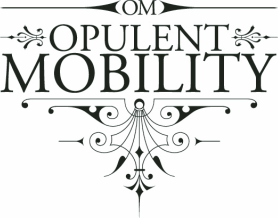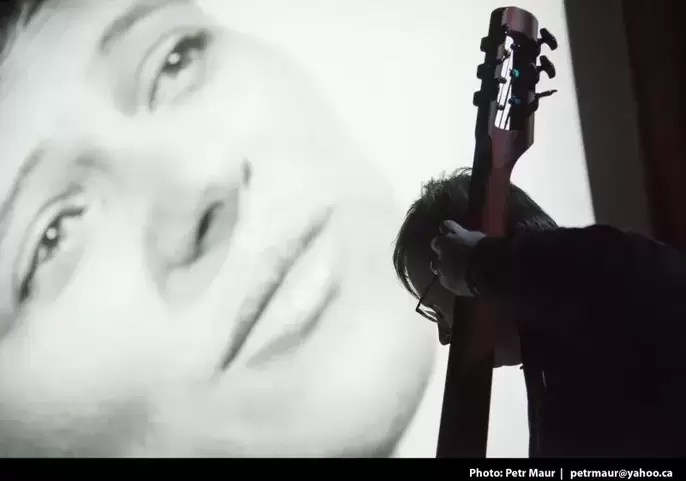Tom Peters
ARTIST INTERVIEW with ASL interpretation:
ABOUT THE MUSIC:
"Because most often people with hearing difficulties can either sense the vibration of bass frequencies or they can actually hear up to, I think it's about 80 hertz, is where most people who are considered deaf or who are hard of hearing can hear those tones. So as we began to work on, as you and I had our discussions, I decided to try something like that so that this, the music that I've written for Opulent Mobility is all ambient. So most of the music, most people are not gonna hear the entire piece, it's supposed to just stay in the background, but people who have hearing difficulties will experience a piece differently because it's driven melodically by the bass. So the bass frequencies are something that people who have hearing difficulties can actually experience that. And people who don't have hearing difficulties will experience something actually quite different because they'll hear the other sounds. So it's kind of like a hidden code for people."
ABOUT THE ARTIST:
“In 2010, the world finally made sense to me. That was when, at the age of 47, I was diagnosed with Autism Spectrum Disorder. Until that time, life had always felt mystifying, like it was governed by a secret rule book that everyone had a copy of except me. As it turned out, my struggles in navigating a neurotypical world had a logical explanation: my brain simply works differently.
It was my neurodiversity that led me to discover the double bass in elementary school. While my fellow fourth-graders were crowding around the violins, the double bass sat alone in a corner. I didn’t want the bass to feel bad, so I brought it home and used it to make scary sounds for a Halloween tape. This pivotal experience taught me that the overlooked double bass had an extraordinary range of expression.
As an adult, I became a double bass soloist who specialized in performing, recording, and internationally touring works by avant-garde composers such as John Cage, Chinary Ung, and Hanne Darboven. I had learned Max/MSP and assembled a portable performing rig so that I could perform new music written for double bass and computer.
I had also begun improvising electronic scores for classic silent films, which caught the attention of Canadian viol player Joëlle Morton. In 2013, Dr. Morton commissioned me to write and perform an electronic score for double bass, tenor viola da gamba, and soundscape for the 1927 classic film The Passion of Joan of Arc.
And so, at the age of 50, I embarked on a new role as a composer. Formally composing music showed me that my extensive experience in performing the works of others had taught me a lot about how music is put together. My completed score to The Passion of Joan of Arc premiered at the Toronto Silent Film Festival in 2013 and was featured in a radio broadcast over the CBC.”
It was my neurodiversity that led me to discover the double bass in elementary school. While my fellow fourth-graders were crowding around the violins, the double bass sat alone in a corner. I didn’t want the bass to feel bad, so I brought it home and used it to make scary sounds for a Halloween tape. This pivotal experience taught me that the overlooked double bass had an extraordinary range of expression.
As an adult, I became a double bass soloist who specialized in performing, recording, and internationally touring works by avant-garde composers such as John Cage, Chinary Ung, and Hanne Darboven. I had learned Max/MSP and assembled a portable performing rig so that I could perform new music written for double bass and computer.
I had also begun improvising electronic scores for classic silent films, which caught the attention of Canadian viol player Joëlle Morton. In 2013, Dr. Morton commissioned me to write and perform an electronic score for double bass, tenor viola da gamba, and soundscape for the 1927 classic film The Passion of Joan of Arc.
And so, at the age of 50, I embarked on a new role as a composer. Formally composing music showed me that my extensive experience in performing the works of others had taught me a lot about how music is put together. My completed score to The Passion of Joan of Arc premiered at the Toronto Silent Film Festival in 2013 and was featured in a radio broadcast over the CBC.”
DESCRIPTION:
Music for Mobility
A series of musical compositions meant to be played in the background and experience by both hearing and Deaf people. The music is ambient and the electronic sounds flow and pulse. It is set at a frequency that will not interfere with ordinary conversation, and relies heavily on bass tones.
-description by A. Laura Brody
A series of musical compositions meant to be played in the background and experience by both hearing and Deaf people. The music is ambient and the electronic sounds flow and pulse. It is set at a frequency that will not interfere with ordinary conversation, and relies heavily on bass tones.
-description by A. Laura Brody
DONATE via Fractured Atlas!

Opulent Mobility by A. Laura Brody is licensed under a Creative Commons Attribution-ShareAlike 4.0 International License
The Opulent Mobility license refers to the exhibit and its audio descriptions. Individual artworks are the property of the individual artists.



